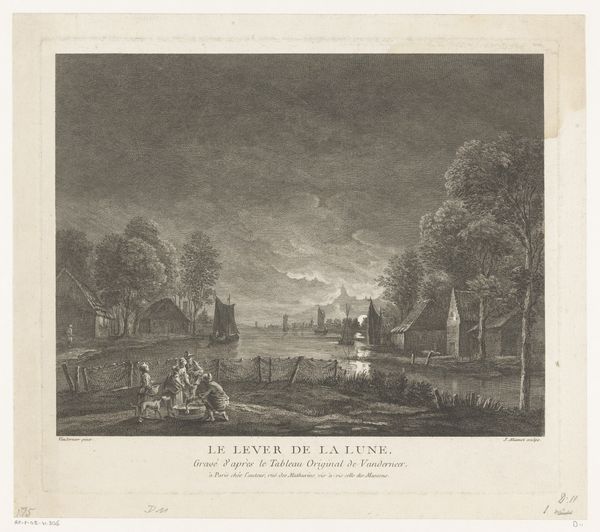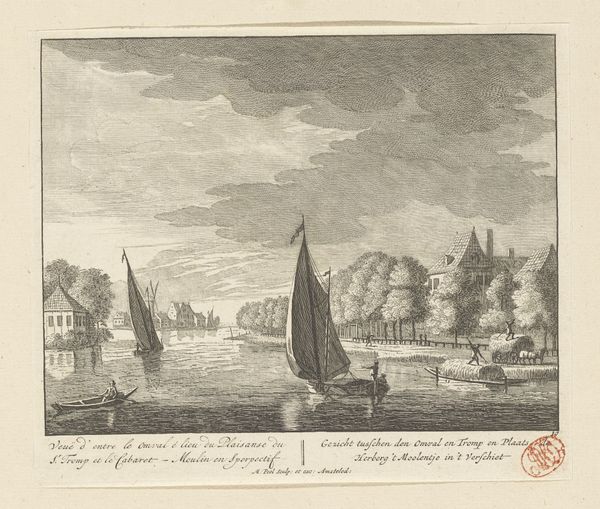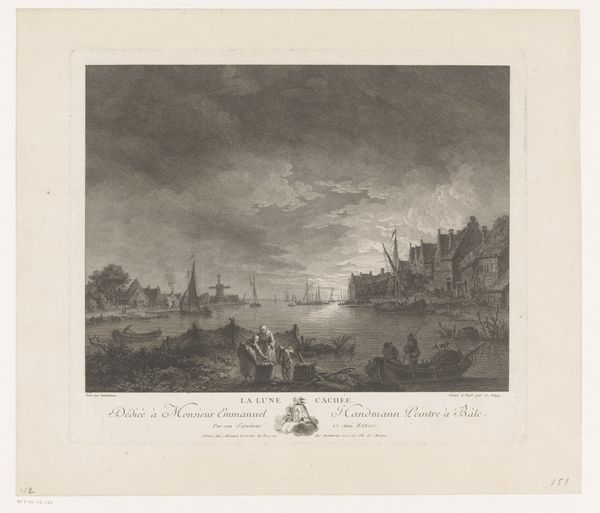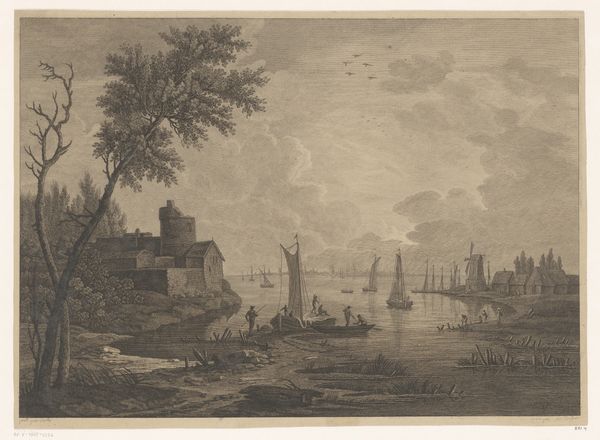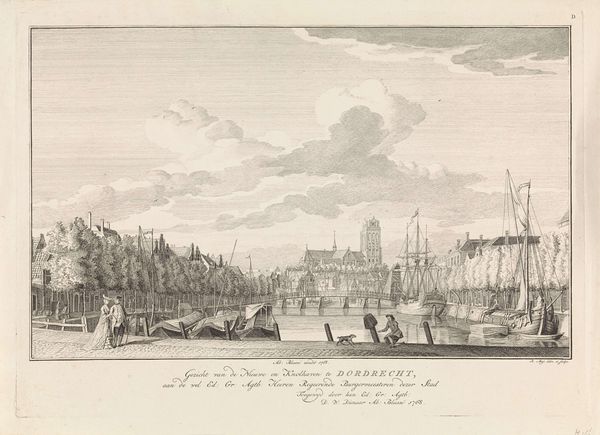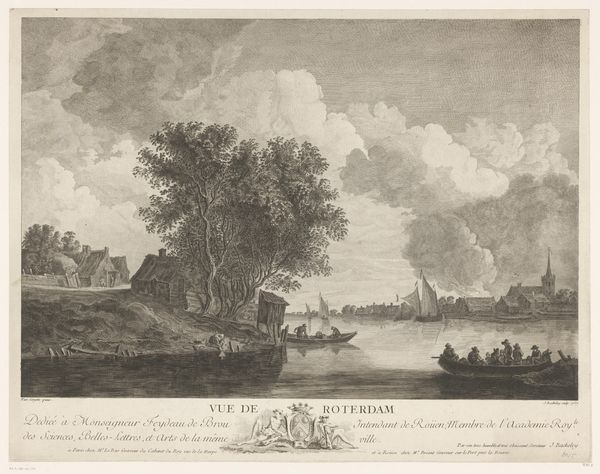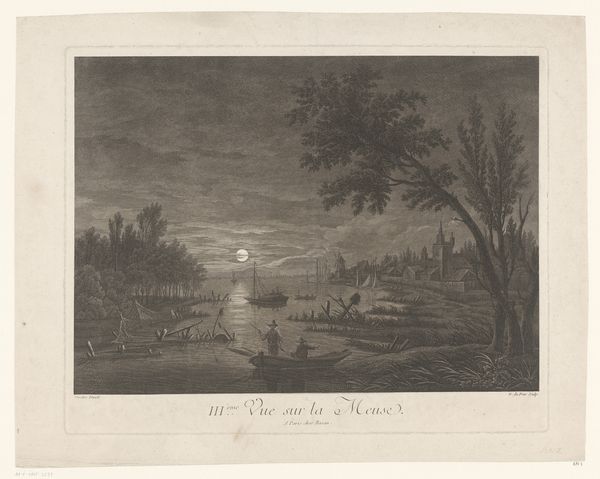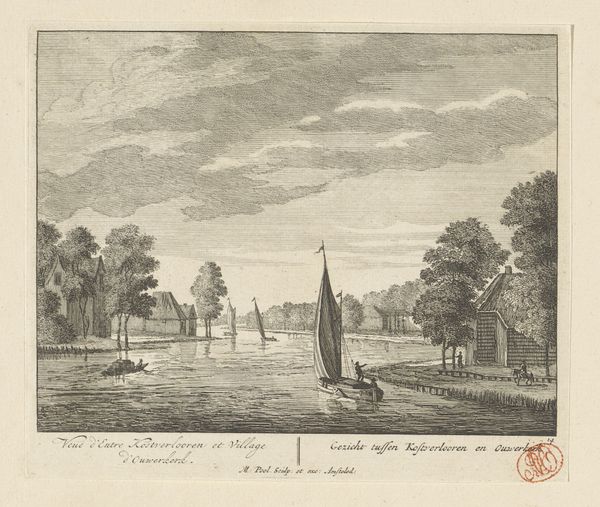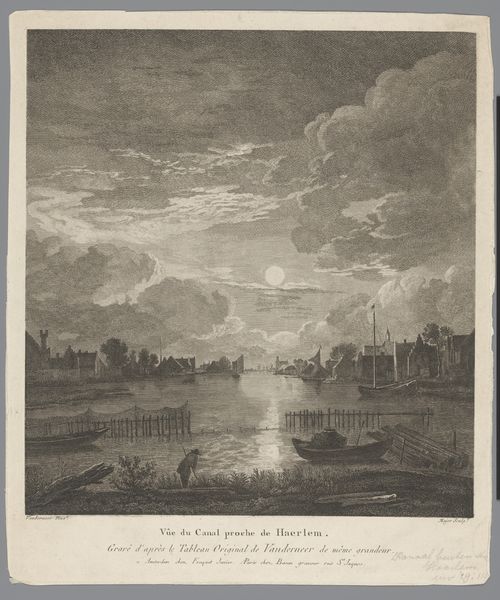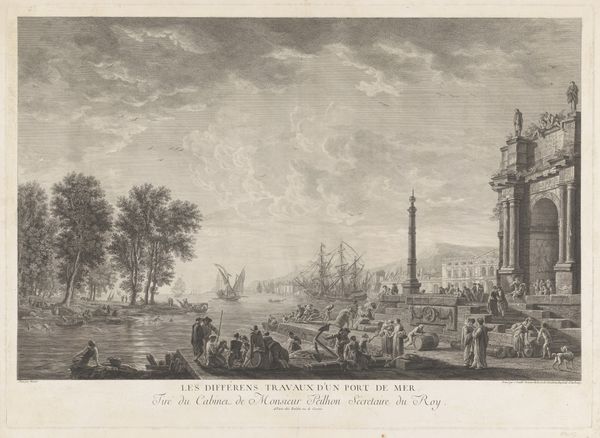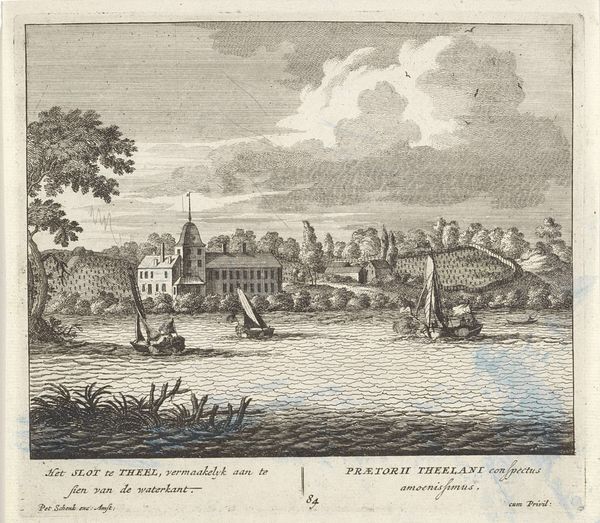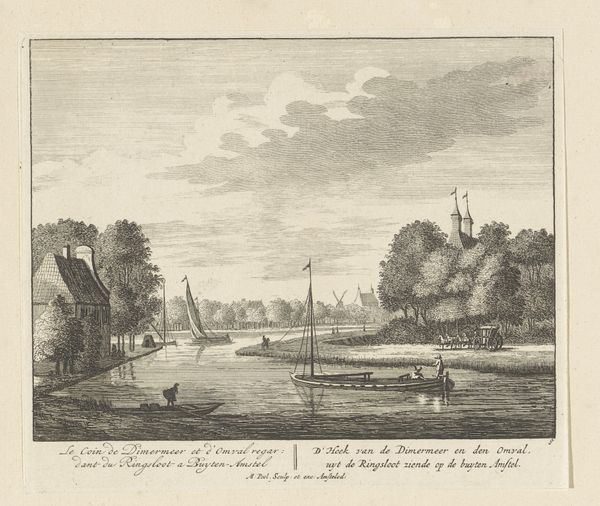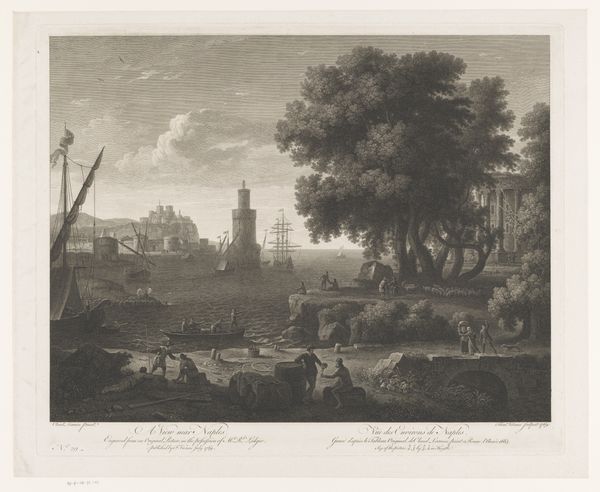
Dimensions: height 384 mm, width 520 mm
Copyright: Rijks Museum: Open Domain
Jacques Aliamet created this print, "View of Boom on the Rupel," in the 18th century, translating a painting by Vander Neer into a widely accessible medium. The print itself becomes a social object, circulating images and ideas within the burgeoning art market of the time. The scene depicts a tranquil view of the Rupel river in Belgium, with Boom visible in the distance. Notice how the landscape is carefully composed, balancing the natural and the built environment. This aesthetic appealed to the sensibilities of the Enlightenment, reflecting a desire for order and harmony. Prints such as these helped to shape the public's perception of landscape, encouraging the appreciation of nature as a source of pleasure and civic pride. The print was made after a painting from the Cabinet of the Comte de Vence. The fact that a scene from the Count's collection would be reproduced and sold highlights the role of the aristocratic elite in setting artistic tastes. To fully understand the context of this work, one must delve into the history of printmaking, the development of landscape aesthetics, and the social structures that supported artistic production in 18th-century Europe.
Comments
No comments
Be the first to comment and join the conversation on the ultimate creative platform.
